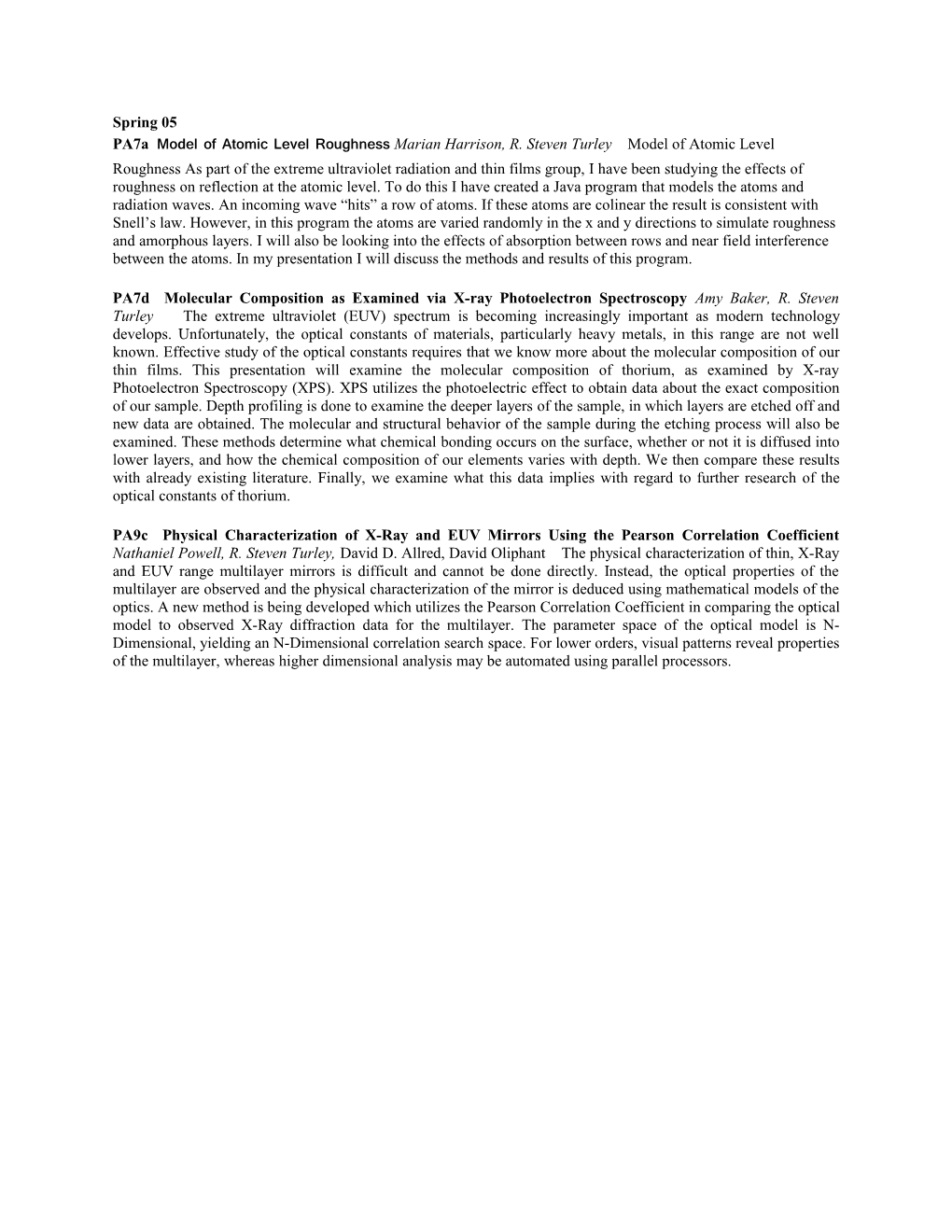Spring 05
PA7a Model of Atomic Level RoughnessMarian Harrison, R. Steven Turley Model of Atomic Level Roughness As part of the extreme ultraviolet radiation and thin films group, I have been studying the effects of roughness on reflection at the atomic level. To do this I have created a Java program that models the atoms and radiation waves. An incoming wave “hits” a row of atoms. If these atoms are colinear the result is consistent with Snell’s law. However, in this program the atoms are varied randomly in the x and y directions to simulate roughness and amorphous layers. I will also be looking into the effects of absorption between rows and near field interference between the atoms. In my presentation I will discuss the methods and results of this program.
PA7d Molecular Composition as Examined via X-ray Photoelectron SpectroscopyAmy Baker, R. Steven Turley The extreme ultraviolet (EUV) spectrum is becoming increasingly important as modern technology develops. Unfortunately, the optical constants of materials, particularly heavy metals, in this range are not well known. Effective study of the optical constants requires that we know more about the molecular composition of our thin films. This presentation will examine the molecular composition of thorium, as examined by X-ray Photoelectron Spectroscopy (XPS). XPS utilizes the photoelectric effect to obtain data about the exact composition of our sample. Depth profiling is done to examine the deeper layers of the sample, in which layers are etched off and new data are obtained. The molecular and structural behavior of the sample during the etching process will also be examined. These methods determine what chemical bonding occurs on the surface, whether or not it is diffused into lower layers, and how the chemical composition of our elements varies with depth. We then compare these results with already existing literature. Finally, we examine what this data implies with regard to further research of the optical constants of thorium.
PA9c Physical Characterization of X-Ray and EUV Mirrors Using the Pearson Correlation Coefficient Nathaniel Powell, R. Steven Turley, David D. Allred, David Oliphant The physical characterization of thin, X-Ray and EUV range multilayer mirrors is difficult and cannot be done directly. Instead, the optical properties of the multilayer are observed and the physical characterization of the mirror is deduced using mathematical models of the optics. A new method is being developed which utilizes the Pearson Correlation Coefficient in comparing the optical model to observed X-Ray diffraction data for the multilayer. The parameter space of the optical model is N-Dimensional, yielding an N-Dimensional correlation search space. For lower orders, visual patterns reveal properties of the multilayer, whereas higher dimensional analysis may be automated using parallel processors.
